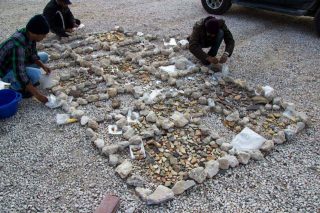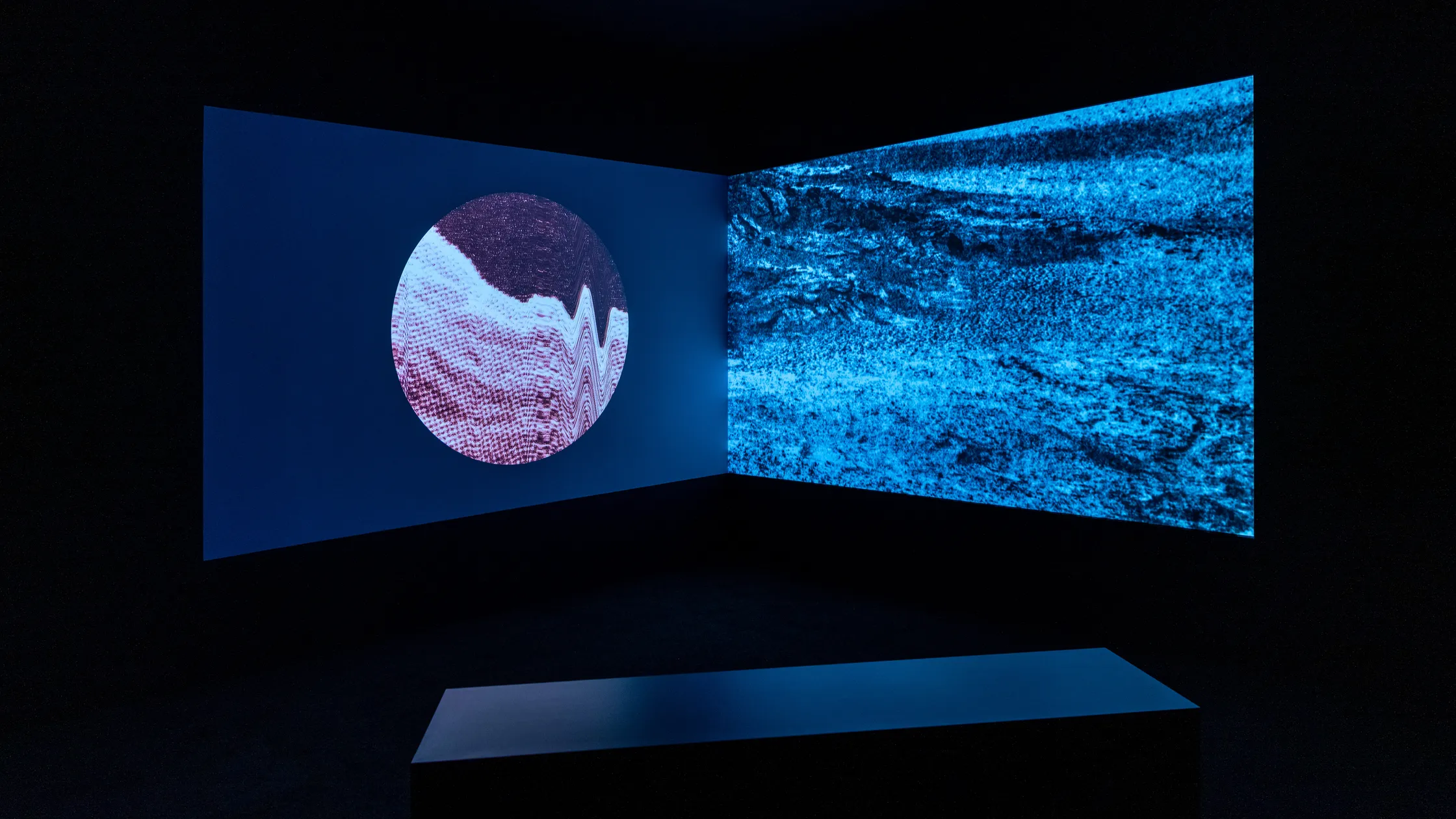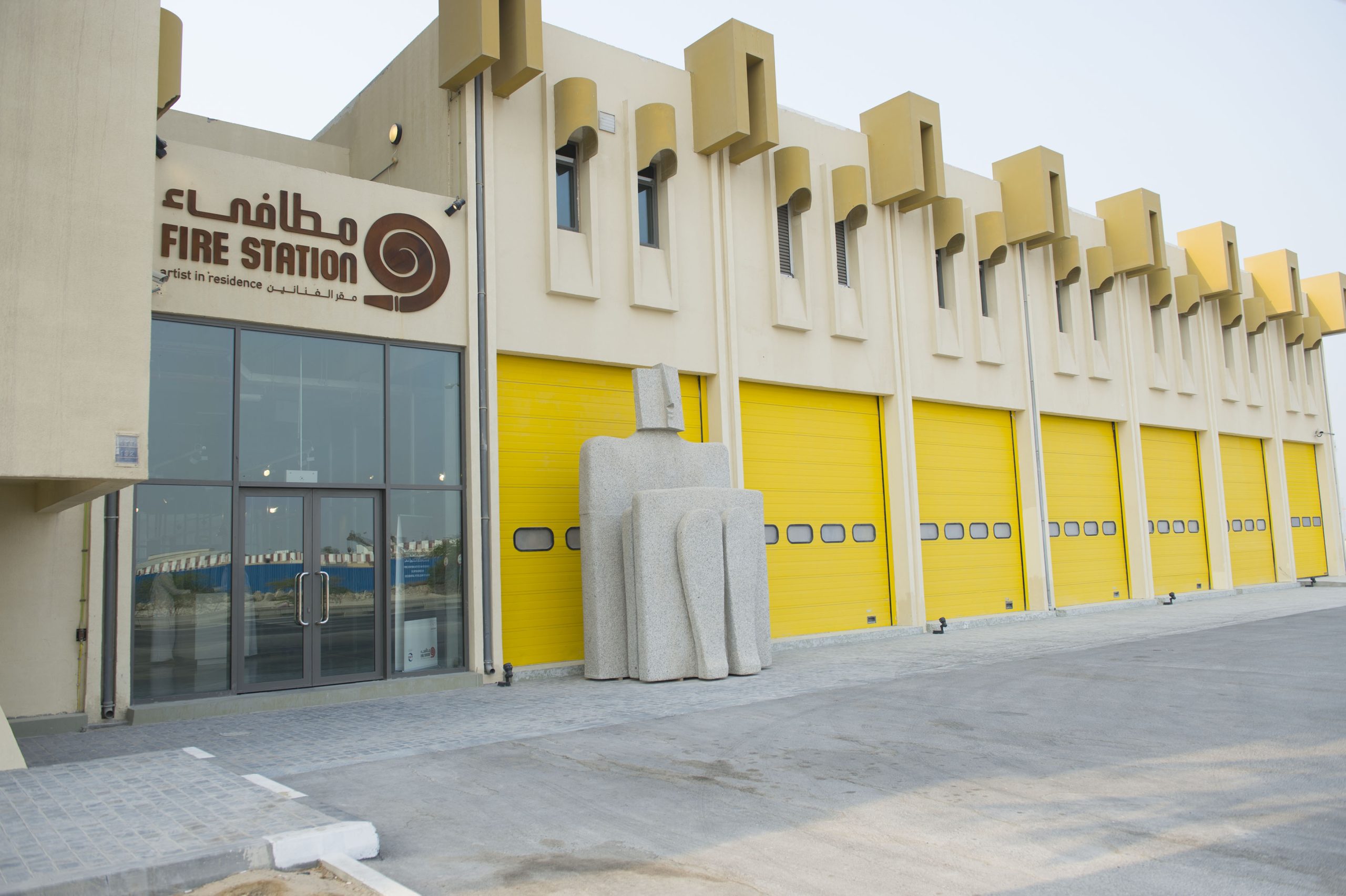Archaeologists say they have recovered a “huge” number of artifacts from a bulldozed dig site directly across from Souq Waqif, which have given them clues about the daily lives of modern-day Doha’s first inhabitants.
To build on the findings, the local team has requested additional time to dig before Qatar Rail begins construction of a metro station on the site, and has been granted an extension until Feb. 15.
Keys, coins, jewelry, a dhow anchor and pottery estimated to be roughly 150 years old are some of the items unearthed at the roughly seven-acre site, located just south of the Fanar Qatar Islamic Cultural Center, by a team comprised of workers and officials from the Qatar Museums Authority (QMA) and University College London Qatar (UCL-Qatar).
The site is adjacent to the Al Qubib Mosque, which was cleared approximately five years ago and is one of the few remaining vacant properties in the historic core.
“This is more or less the last place where you can dig into Old Doha and understand the history of the city,” Ferhan Sakal, a QMA archaeology consultant, told Doha News during a tour of the site on Thursday afternoon.
The team, which is comprised of 25 laborers and 10 archaeologists, was initially given a month and a half to complete its work. However, the success in unearthing walls, floors and household items dating back to the mid-19th century prompted the researchers to request and receive a one-month extension.
Over the next few weeks, the archaeologists will work to complete what Sakal calls Qatar’s last chance at uncovering artifacts from this particular neighborhood.
“Once it is lost, it is lost forever,” he said.
History
In the 19th century, Doha was a separate village close to the town of Al Bidda. Both harbor settlements suffered several separate bombardments and attacks over the course of the century by the British Navy, as well as forces from Bahrain and Abu Dhabi, according to UCL’s Origins of Doha Project.
At the time, the waters of Doha Bay extended further than in the modern-day city, covering the area that currently features the Qatar Central Bank and Fanar. This means the northern part of the dig site more or less abutted the beach a couple centuries ago.
Sakal said he and his colleagues are trying to learn more about daily life of the city’s early residents, starting with the question of when exactly Doha was founded.
Other questions include:
- What did they eat?
- How did they live?
- What kind of jewelry did they wear?
- What kind of tools did they use?
“We don’t dig for objects. We dig to rescue clues of history. We want to dig out the pieces of the puzzle,” Sakal said.
Working from aerial photos taken of the area dating back to the 1940s, the archaeologists focused their attention on areas of the site that had seen minimal recent development to increase their odds of finding older artifacts.
They originally began excavating a half-dozen “trenches,” but soon shifted their resources toward the four that yielded relics. These include a courtyard that was once surrounded by rooms of various sizes – likely all belonging to the same family – as well as a section of alleyway and its abutting residences.
Findings
Large concrete blocks, likely used in the construction of building walls within the last four decades, were found closest to the surface. In many cases, they were built directly atop older walls constructed of stones and mortar.
The walls and sections of floor become older the deeper the crews dig, creating square pits that provide a glimpse into a layered cross-section of Doha’s history.
“We see several steps of development,” Sakal said.
Workers have found the dugouts and remnants of several ceramic tannurs, or bread ovens. In at least one case, Sakal joked that they found evidence of “antique recycling” – a ceramic water jug, measuring roughly half a meter wide and half a meter high, was turned upside down and used as an oven, possibly after it had broke and could not be used for its original purpose, Sakal speculated.
Other findings included:
- A corroded copper or bronze ring with an inscription that will become visible after cleaning;
- Coins;
- A key;
- A 50-centimetre-wide stone with several holes that was likely used as a dhow anchor;
- A 15cm-wide shell bearing cut marks that suggests its owner was trying to extract the mother of pearl. This, Sakal said, suggests Doha’s residents not only harvested pearls, but also made use of the material from the shell;
- Gypsum ornaments and other decorations from area homes, providing clues about the architectural styles of the era; and
- Porcelain that originated from outside Qatar, possibly in Europe and Asia. Once its origins are definitively identified, it will provide more information about Qatar’s trading patterns.
Once crews complete their excavation work in mid-February, they’ll use their findings to build on their knowledge of what life was like in Doha roughly 150 years ago, eventually publishing the conclusions.
The artifacts themselves will end up in the care of QMA’s archaeology department and may be exhibited at the new National Museum of Qatar.
Ultimately, Sakal said, the country will have reclaimed some of the first pieces of Old Doha that had been buried for decades.
“This is a way of giving (Qataris) their history back.”

















